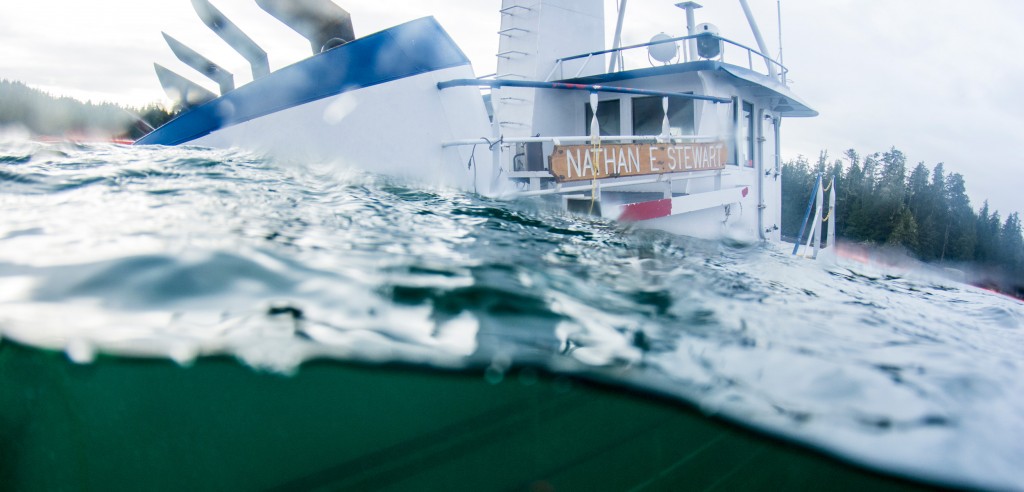April 2017: Hakai Magazine
In the waning light of November 14, 2016, the tugboat Nathan E. Stewart was finally lifted from the chilly water off British Columbia’s Athlone Island—32 days after it ran aground on its way south from Alaska.
When the tug struck the rocks on Edge Reef shortly after 1:00 a.m. on October 13, it was pushing a 10,000-tonne-capacity fuel barge. The barge was empty, but the tug still leaked about 110,000 liters of diesel and more than 2,200 liters of engine lubricants into the waters near Bella Bella, a town of 1,450 people in the traditional territory of the Heiltsuk First Nation. Strong winds and high tides pushed the fuel across Seaforth Channel and into Gale Creek, the site of an ancient Heiltsuk village, polluting critical marine habitats and harvesting sites.
“It was horrific—seeing the ocean full of diesel, and that sickening odor,” recalls Jordan Wilson, a Heiltsuk coastal guardian watchman, and one of the first on the scene. “All the hydraulic oils and engine oils—everything was just oozing out of that boat for weeks.”
With each tide, the toxins washed higher up on shorelines of surrounding islands. “That’s where I’d go to harvest food to share with my family and friends,” adds Wilson, “but not anymore.”
For many people outside the community, it was just another media story—a snapshot of a tragic event from a remote place. For locals, the spill lives on in myriad ways, with authorities still feeling the effects of a months-long drain on already strapped financial and human resources, and fishers unable to harvest manila clams and other species that may have been contaminated.

